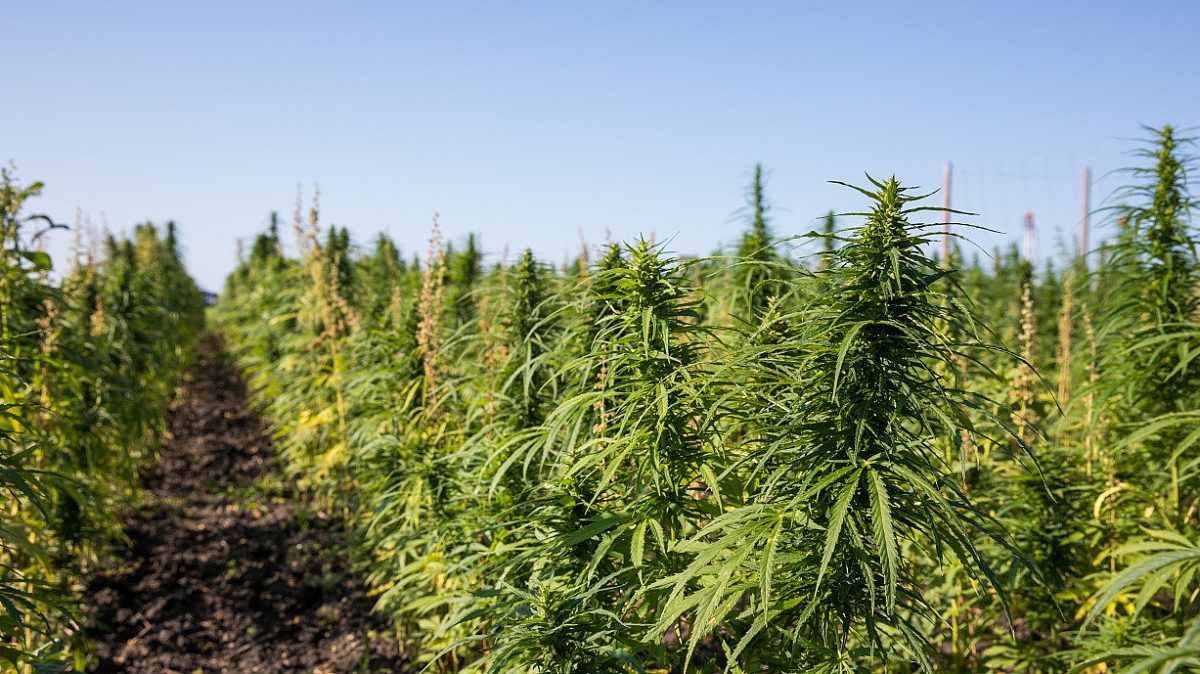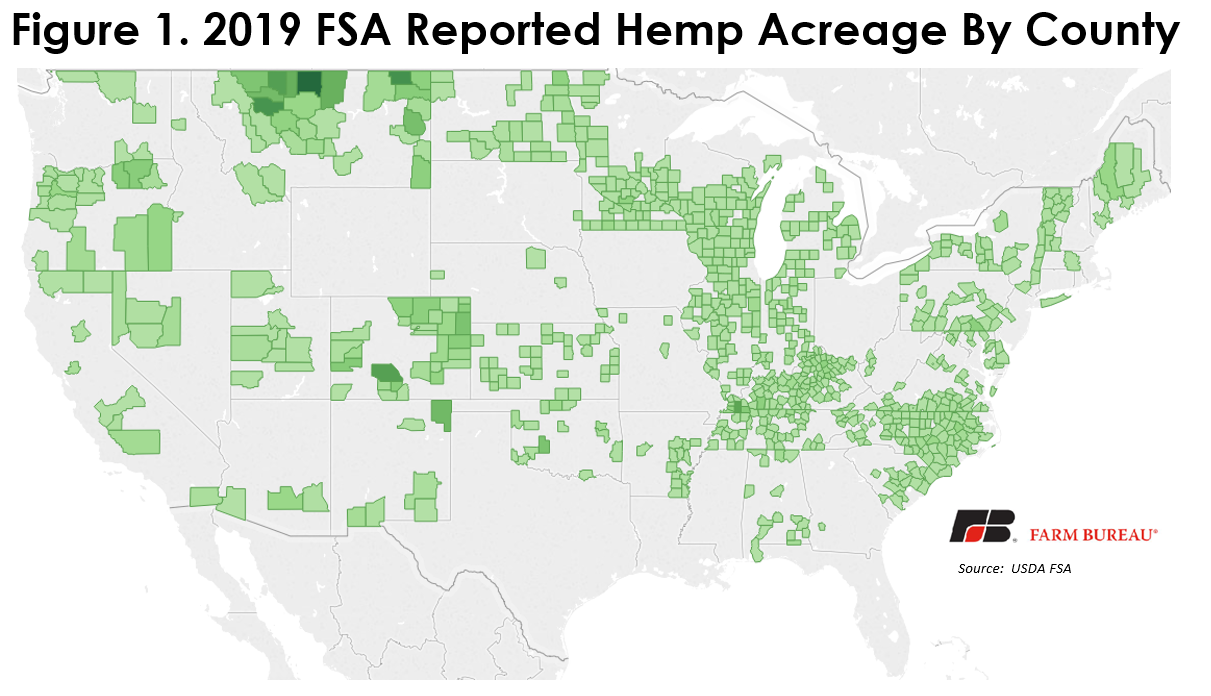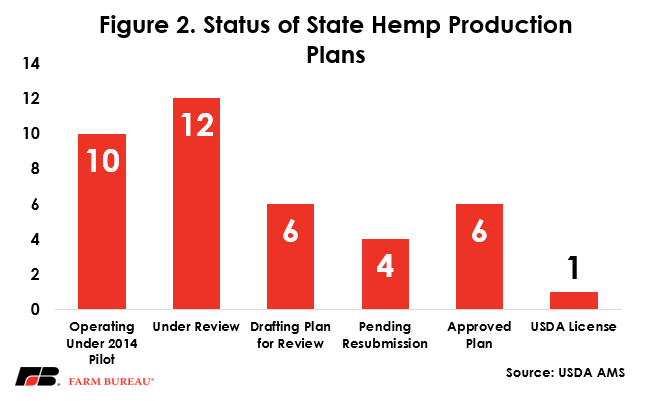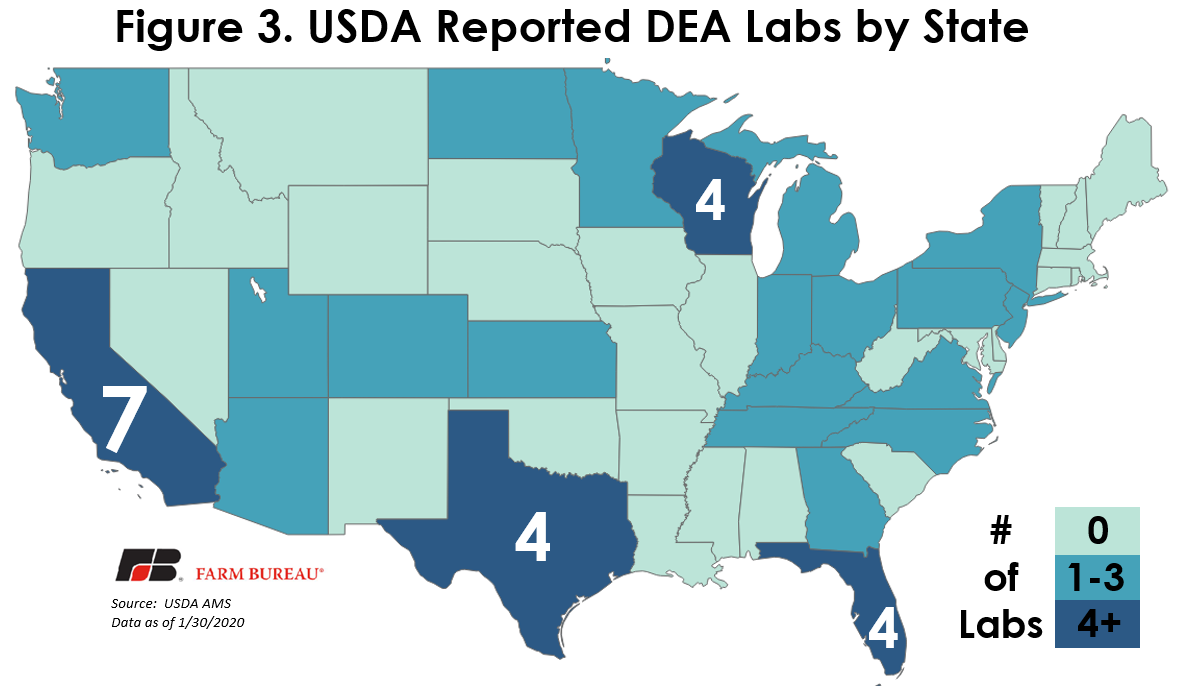Changes Needed to Hemp Interim Final Rule as Comments Are Due
Michael Nepveux
Economist

photo credit: AFBF Photo, Philip Gerlach
Michael Nepveux
Economist
Background
The 2018 farm bill legalized the production of hemp as an agricultural commodity and removed it from the list of controlled substances (2018 Farm Bill Provides A Path Forward for Industrial Hemp). On Oct. 29, USDA released the text of its interim final rule for regulations establishing a domestic hemp production program. Since this is an interim final rule, it went into effect immediately upon being published in the Federal Register. On Wednesday, Jan. 29, public comments on the interim final rule were due, with many agricultural organizations, including the American Farm Bureau, submitting comments on the rule.
What is Current Situation for Hemp in the U.S.?
Hemp production is legal in 47 states. The farm bill allows Idaho, Mississippi and South Dakota to continue to ban production of the crop within their borders, though some of these states seem poised to potentially address the issue of hemp legalization in the coming year.
The 47 states in which hemp production is legal have wasted no time since the passage of the 2014 and 2018 farm bills. According to USDA’s Farm Service Agency, planted hemp acreage totaled nearly 148,000 acres in 2019. Montana led the way with nearly 45,000 planted acres, followed by Colorado (nearly 21,000 acres) and Kentucky (nearly 19,000) acres. However, it should be noted that for 2019, planted acreage reporting for hemp was still largely on a voluntary basis, and other estimates place acreage numbers much higher.
Vote Hemp, an advocacy organization promoting hemp, releases its own fairly accurate hemp crop production report based on data compiled from individual state departments of agriculture. For 2019 Vote Hemp estimated that approximately 230,000 acres of hemp would be planted and that over 511,000 acres were licensed for hemp nationally (not all licensed acres are planted).

The interim final rule meant that states that were operating under the 2014 farm bill would have to either resubmit their original hemp regulation plans or submit new plans that adhered to the new federal rule. As of Jan. 29, USDA had approved 7 Tribal government plans and 6 state government plans under the interim final rule: Delaware, Louisiana, Nebraska, New Jersey, Ohio and Texas. New Hampshire will operate under USDA’s program, rather than submit its own plan, while 10 states are either currently drafting a plan for review or are pending resubmission. Twelve state plans are currently under review by USDA, while 10 states will be allowed to operate under their plans under the 2014 pilot program.

Issues Raised by the Interim Final Rule
The industry is grateful to USDA for issuing the interim final rule and providing some much-needed clarity and guidance to states and farmers about the operating environment of their next growing season. Additionally, farmers and stakeholders certainly understand that it was exceedingly challenging to develop a national hemp program in such a short period of time. However, as is always the case with new regulations, there are some aspects of the rule that farmers and others feel could be adjusted to more accurately reflect the realities of growing and marketing hemp. Farm Bureau and its members hope for a constructive process moving forward to address some of the potential shortcomings of the rule.
- THC Testing
The Interim Final Rule requires more stringent THC testing than called for in 2018 farm bill. (The farm bill calls for testing of delta-9 THC, but the interim rule calls for testing of delta-9 THC and THC acid/THCA.) This approach has the potential to cause an otherwise legal product to be characterized as a “hot crop” that would fall outside the legal definition of industrial hemp, risking crop destruction even though the delta-9 THC level is below the 0.3% threshold identified in the 2018 farm bill.
The “Total THC” approach outlined in the interim final rule sums the THCA and delta-delta-9 THC content. THCA is an acidic cannabinoid that does not contain psychoactive properties. Delta-9 THC is a neutral cannabinoid, meaning it possesses psychoactive properties. THCA can convert to delta-9 THC through the process of decarboxylation, which can occur through exposure to heat or sunlight. A plant testing for 0.3% or less of delta-9 THC, but also with a certain concentration of THCA, could feasibly be altered through decarboxylation to result in a higher delta-9 THC content. While the 2018 farm bill calls for THC concentration to be measured “using post-decarboxylation,” the statutory provisions also explicitly allow for “other similarly reliable methods.” There are reliable methods in which THC can be measured independently, including high-performance liquid chromatography. In requiring THCA to be measured, USDA has gone beyond what is statutorily required.
Additionally, the USDA interim final rule requires testing for only a portion of the plant—the flower—which happens to be the portion with the highest THC content, even though farmers harvest and process the entire plant. Without testing the entirety of the plant and by requiring farmers to account for more than the statutorily required delta-9 THC levels, the interim final rule requires hemp farmers to test the highest possible level of THC from a plant without ability to dilute THC after harvest or salvage crops. AFBF supports the required testing of a plant to include the flower, leaf and stem from parts of the entire plant in equal proportion, as opposed to only the top third of the plant.
Finally, AFBF agrees with the approach in the interim final rule that defines the “acceptable hemp THC level” as “the application of measurement of uncertainty to the reported delta-9 THC content concentration level on a dry weight basis produces a distribution or range that includes 0.3% or less.” The measurement of uncertainty helps to address the inherent statistical uncertainty that occurs in the testing process. This flexibility should be retained in the final rule.
- 15-Day Sampling Requirement
The interim final rule requires that samples for testing of THC concentration levels be collected within 15 days of the anticipated date of harvest. The regulations go on to specify that state hemp programs must prohibit industrial hemp farmers from harvesting their crop until the samples have been taken. Given the reality of time and labor commitments for harvesting, the 15-day sampling requirement specified under USDA’s interim final rule is unrealistic for hemp producers. To sample and harvest an entire crop within a 15-day period requires a major financial investment with no guarantee of completed testing, placing hemp growers in a vulnerable position. Additionally, if farmers wait on the testing to be completed and ensure that the crop tests at or below the acceptable THC level, they may be required to harvest their crop on an even shorter timeline than 15 days. Given the challenges throughout the Midwest in the 2019 planting season due to excessive moisture, we should be positioning our farmers to succeed in the future if an event of that magnitude were to occur again, and a 15-day window would only exacerbate this problem. AFBF feels that USDA should revisit this requirement in order to balance between testing at a standard to obtain adequate validation of THC levels and placing an unfair and expensive burden on farmers. AFBF supports extending this 15-day requirement to testing the crop 45 days before harvest.
- DEA Testing Lab Requirements
The rule requires that testing be completed by an approved Drug Enforcement Administration-registered laboratory using reliable methodology for testing the THC level. USDA has recently added to its hemp program website a list of hemp testing laboratories registered with the DEA. Over time more laboratories may be added. As of Jan. 30, USDA reported only 44 approved laboratories in 22 different states. Having such a small number of laboratories approved to test samples from the hundreds of thousands of acres in the U.S. is sure to result in backlogs and delayed testing times. When combined with the 15-day harvest window, some farmers will likely be unable to harvest their crop within the window. Figure 3 shows which states have approved DEA-registered laboratories and those states with higher concentrations of facilities.

Given that there are 28 states without an approved testing facility, farmers may be required to ship untested samples of hemp plants across state lines in order to comply with USDA regulations. In the process of transporting hemp samples to be tested, producers run the risk of sending hemp plants that contain or may test above the legal limit of THC, ultimately putting them in the position of having shipped an illegal substance across state lines. So, in complying with USDA’s regulations, hemp producers may actually provide evidence to the DEA that they have committed a federal crime — transporting a controlled substance across state lines — and be at risk of prosecution.
- Disposal of non-compliant crop
For disposal of non-compliant crops, the interim final rule requires the DEA or another entity authorized to handle marijuana under the Controlled Substances Act will dictate the process for disposal. This will likely create unnecessary and costly burdens on both the farmers and the states and tribes managing industrial hemp programs. Allowing simpler, more timely and cost-effective methods for disposal overseen by state agriculture departments and law enforcement agents would provide greater flexibility and minimize burdens on the regulators and farming community. Additionally, rather than dispose of 100% of a hot crop, AFBF supports alternative uses of a product that has tested in excess of the established 0.3% threshold so that a producer does not lose 100% of the significant investment incurred in planting and growing a hemp crop. Producers who elect to grow this crop will expend great amounts of time, money and other resources producing this crop. If, even through no fault of their own, this crop tests above the 0.3% threshold, there should be other options available to producers other than complete destruction and loss of investment.
Conclusion
With USDA’s interim final rule in place, industry stakeholders had an opportunity to have their voices heard and participate in the process by submitting comments. This rule was a step in the right direction, and industry applauds USDA for providing clarity to producers in a time of great uncertainty. Additionally, AFBF recognizes the difficulty that USDA faced in pulling together such a comprehensive program in such a short period of time. However, as is often the case, Farm Bureau members feel there is room for improvement. The issues raised by Farm Bureau members range from the testing methodology and timeline requirements, to the types of labs that are able to test samples. The issues highlighted in this Market Intel article are by no means an exhaustive list of the improvements our members would like to see made to the rule, or an exhaustive list of issues that others in the industry have raised with the rule. We all look forward to working to improve the system for everyone over the next year.
Trending Topics
VIEW ALL